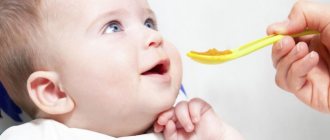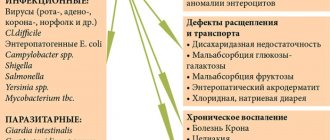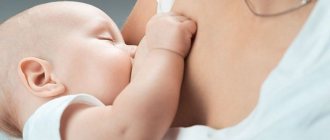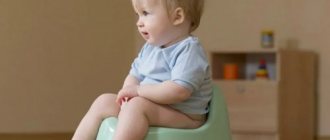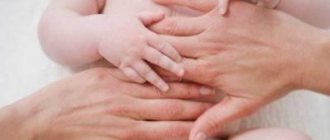Stool is always considered the main indicator of health. For children, this rule is even stricter. After all, a preschool-age child is not able to clearly and clearly talk about his well-being.
But babies cannot say anything at all, so parents must draw their own conclusions about the state of their health. And in this case, it is the stool that becomes the main indicator of health. Any deviations from the usual norm should be cause for concern and should be a reason to consult a doctor.
Natural feeding
With natural feeding, the baby's stool will be liquid.
Exclusively breastfed babies defecate very frequently. In most cases, they go to the toilet almost as many times as they are breastfed. Their stool is more liquid than that of artificial ones.
With breastfeeding, foam in the stool becomes a reaction to the introduction of new foods into the diet of a nursing woman. This phenomenon does not require correction, as it is considered a variant of the norm.
The situation normalizes without any external influences after introducing complementary foods into the diet. Therefore, at the age of six months, the foam disappears completely.
To calm down and understand that there is no problem, you need to observe the baby’s general well-being and take control of weight fluctuations. If he is cheerful, active, and gains weight regularly, there is no need to worry.
When breast milk does not satisfy the body's needs, the stool darkens, becomes foamy, the child himself cries, is capricious, and sleeps little. In this case, you need to adjust the GV. Sometimes foamy stools are a consequence of improper breastfeeding.
Foamy stool in a baby
Foamy stool in a baby can be a sign of both proper development and “dirty hands disease.” Differences in bowel movements are more often associated with age and the nutrition that children receive. What kind of foamy stool is considered normal, and when the problem is so serious that the child’s condition should be reported to the pediatrician and undergo an examination, said Ph.D., doctor of the highest category, pediatrician Alla Anatolyevna Shcherbakova.
— Alla Anatolyevna, is a child’s foamy stool a separate disease or a symptom of some kind of ailment?
— An infant’s stool is different from an adult’s stool, and you should not expect “adult” bowel movements from a small child.
Newborn stool: age characteristics
original stool (meconium)
| transition chair
| uniform stool
|
| The nature, frequency, color, volume, smell of stool is different for all children - it all depends on the type of feeding, time of day, and nutrition of the nursing mother. |
|
Foamy stool in a formula-fed newborn or foamy stool in a breastfed infant indicates the process of fermentation in the intestines, which is caused by the growth and development of intestinal microflora (microbiota) and the development of digestion. And if the child is cheerful, feels good, eats well and gains weight, then foamy stool cannot be considered a pathology.
— In what cases is foamy stool in a child under one year of age an indication for a medical examination?
- If the baby is restless, capricious, lethargic, eats poorly, does not gain weight well, spits up, does not maintain intervals between feedings, does not eat the entire portion per feeding and at the same time asks to eat more often than required, may not sleep at night - you should consult a doctor. In other cases, a baby's stool with foam should not disturb parents.
Why does a baby have foamy stools: real and imaginary reasons
| Complementary feeding introduced too early | The immature gastrointestinal tract is not ready to accept complementary foods and cannot cope with nutrients (proteins, fats, carbohydrates). Foamy stools may be accompanied by mucus, an unpleasant odor, and undigested lumps. |
| Complementary feeding started on time, but with the wrong foods | Previously, complementary feeding began with fermented milk products (cottage cheese, kefir, yogurt). A child with a food intolerance to cow's milk proteins reacts to such food by developing eosinophilic esophagitis or eosinophilic colitis, which causes foamy stools. |
| Medicines | Colic medications contain lactose (milk sugar), an excess of which can cause loose, foamy stools. |
| Foamy stools as a sign of indigestion | Foamy stools against the background of bloating, colic, and flatulence are considered normal when switching to enteral nutrition and the formation of intestinal microflora. |
| Breastfeeding mother is not eating properly | If a breast-fed baby is intolerant to animal milk proteins, a gastrointestinal food allergy may develop, which is accompanied by foamy stools. Mom is switched to a dairy-free diet. |
| The baby receives only foremilk | It is impossible to talk about foremilk as the cause of foamy stools. Secretion in the lobules of the mammary gland varies - in one gland, for example, 5 ml, in the other - 50 ml of foremilk. When feeding, it can end either in the first or fifteen minutes, so it is difficult to determine what kind of milk the baby received. |
— Alla Anatolyevna, we will also consider some pathological reasons for the appearance of foam in the baby’s stool.
Dysbacteriosis
— A disturbance in the composition of the microbiota, which we call dysbiosis, is the norm in a small child. Therefore, dysbiosis is not considered a disease; all children have different microbiota. If the microbial composition in the body is disturbed, the child may experience pain due to gases that the microbes secrete. Bloating and foamy stools with colic will not be a disease.
Intestinal infections
— When caring for a child in the first months, and especially the first weeks of life, it is not worth talking about intestinal infections. At this age, he has little contact with people and receives mostly breast milk or powdered milk formula. Intestinal infection is caused by pathogens - rotavirus, enterovirus, norovirus, paravirus or bacteria Salmonella, Shigella, which are transmitted through contact from a sick person to a healthy person. Therefore, foamy stool in a newborn and a child in the first months of life is unlikely to appear due to an intestinal infection.
In children of the second half of life who receive complementary foods, begin to crawl, stand up, or even walk by the hand around the playground, foamy stools can be a sign of an intestinal infection, which is most often accompanied by abdominal pain, vomiting, deterioration of health, fever, and loss of appetite. .
Lactase deficiency
— In children, this is a secondary phenomenon that appears against the background of immaturity of the pancreas and goes away over time. A deficiency of the lactase enzyme, which breaks down milk sugar (lactose), may be accompanied by foamy stools with a sour odor, increased gas formation, and bloating.
Foamy stools in themselves are often not a disease. The reason for making an appointment with a doctor will be the appearance of blood and mucus in the stool, regurgitation, low weight gain, insufficient nutrition, skin rashes, fever, anxiety, and shortening the intervals between feedings.
- Yellow foamy stool in a baby, green stool with foam after formula, loose stool with foam - characteristics that are heard by many parents. What tests can be done to determine the cause of such conditions?
- Perform a coprogram - an informative study of stool. A small piece of stool is placed in a container. The laboratory doctor examines under a microscope its organoleptic properties, color, smell, consistency, content of fats, starches, undigested pieces and dietary fiber, determines the presence of mucus, red blood cells, white blood cells in the stool, and the reaction to protein.
The doctor may also prescribe:
- general blood test - look at general indicators, whether there is inflammation, a tendency to allergies, whether the iron content is sufficient;
- analysis of macro- and microelements - potassium, sodium, chlorine, calcium, magnesium;
- analysis for fecal calprotectin - an inflammatory protein;
- analysis for cationic protein of eosinophils - if an allergy is suspected;
- Ultrasound of the abdominal cavity and functional tests.
— How to treat and improve stool in a child? Can his parents help him themselves?
| No treatment needed If the child is cheerful, feels well, appetite and weight gain are normal, there are no complaints. | Treatment is prescribed by a doctor For problems with the gastrointestinal tract, digestive disorders, and bowel habits. |
— Pediatricians do not treat foamy stools. The child may be prescribed probiotics, since foamy stools are accompanied by a fermentation process in the intestines during the formation of the microbiota. Therapy lasts 28 days, during which time microbes populate the entire gastrointestinal tract, after which the drug is gradually eliminated.
Simethicone medications for colic, bloating, gas, and flatulence cause foamy stools in some children.
| It is better not to give folk remedies to a newborn In the first months of a child’s life, the intestines are immature and are not ready to accept medications, including folk remedies. Only vitamin D preparation is allowed. | Folk remedies are allowed for intestinal infections The doctor prescribes drinking chamomile, blueberries, potato or milk-rice broth. But their effect has not been proven. |
If the child feels well, the foam in the stool will disappear on its own as the digestive organs mature and the intestinal microflora develops.
— Can prolonged foamy stool lead to dehydration?
- Foamy stools cannot cause dehydration. But if it is associated with diarrhea, vomiting, or high fever due to an infectious disease, then this can lead to dehydration. At the first suspicion of infection, it is better to consult a doctor and treat the child. In general, the infectious process is more typical for children in the second half of life, since before that they communicate only with family members.
Foamy stools in a small child happen very often, but do not always indicate illness. If the baby is feeling well, there is no reason to worry. Problems with the gastrointestinal tract, digestion, weight gain, and nutrition may be accompanied by foamy stools. In this case, you need to consult a doctor to prescribe an additional examination.
Pediatrician Alla Anatolyevna Shcherbakova
*The ideal food for an infant is mother's milk. WHO recommends exclusive breastfeeding for the first 6 months. MAMAKO® supports this recommendation. Before introducing new foods into your baby’s diet, consult a specialist.
Lactase deficiency
With lactase deficiency, pain in the tummy is observed.
The peculiarity of this condition is the lack of lactase; this is a special enzyme, without which the breakdown of lactose contained in dairy products is impossible.
With lactase deficiency, in addition to foamy stools, bloating, rumbling, and pain are observed.
Externally, this pathology can be identified by watery marks around the feces on baby underwear; wet spots seem to spread across the diaper. Diagnosis consists of a special stool analysis. If the assumption is confirmed, a lactose-free diet is started.
A timely transition from regular formulas to lactose-free or low-lactose formulas gives a visible effect. The most popular are “Bebilak-FL” and “Nutrilon”. If the baby is breastfeeding, he is fed with hind milk, which contains more fat. To give foremilk, you need to use special preparations.
Lactase Baby is recommended for children under one year of age. If a child begins to suffer from lactase deficiency, you should not be afraid and switch to artificial feeding. But we must always remember that such children should not be given medications containing bifidobacteria and lactobacilli.
If this problem occurs, you should not despair. A balanced therapeutic diet will help regulate the situation and restore normal enzyme production.
Survey
Foamy stool in a child is considered a reason to consult a doctor if it is observed several times and is accompanied by associated disorders. Diagnostics involves the use of several effective methods to obtain a complete picture of the child’s condition.
| Method | Features of the event |
| General inspection and survey | The first stage of diagnosis, which involves examining the patient and interviewing him. If the child cannot independently talk about the symptoms, parents who monitor his condition are interviewed. The doctor palpates the abdomen, examines the skin and mucous membranes, and notes possible symptoms that may indicate the development of an infectious disease. After the examination, a further diagnostic scheme is determined. |
| Clinical blood test | A standard method in which a child’s blood is examined in a laboratory to identify signs of inflammation and possible complications from internal organs. Based on the data obtained, the feasibility of prescribing certain medications is determined. |
| Coprogram | A method that involves examining stool for the presence of parasites, as well as other causes that can provoke a pathological condition. The feces are examined in the laboratory, after which the doctor determines the probable cause of the disorder. |
| Ultrasound diagnostics | An additional research method in which the organs of the digestive system are studied using a special device. As a result, it is possible to determine the presence or absence of pathologies of the liver, gall bladder, and pancreas. |
| Bacteriological culture | Culture is necessary if the disorder is of bacterial origin. Its result allows you to determine which antibacterial agents microorganisms are sensitive to. Thanks to the research, the most effective antibacterial medicine can be prescribed. |
Additionally, a blood test may be needed to determine whether the child has an intolerance to a particular product. After receiving the diagnostic results, the specialist determines the cause of the disorder and prescribes medications, if necessary.
Food allergies
Food allergies occur when new foods are introduced into complementary foods.
An allergic reaction may appear as foamy stools. The most common provocateurs of allergic reactions in infancy are:
- For products received by the mother (citrus fruits, berries, nuts).
- For newly introduced mixtures.
- On medications, especially when using antibacterial drugs.
- For certain types of complementary foods or when they are introduced too early.
As soon as allergens can be identified and eliminated, the stool will become normal.
Prescribing proper nutrition
A prerequisite for treating diarrhea in a child is to change the diet and exclude from it foods that can aggravate the condition or provoke its re-development.
Experts recommend avoiding the following foods:
- Fatty meat and dairy products.
- Nuts.
- Fresh vegetables and fruits.
- Freshly squeezed juices.
- Porridge should also be excluded if an intolerance to certain components of grain products is diagnosed.
The child's diet should consist of boiled or stewed dishes. Vegetables can be steamed; apples and some other fruits are also better baked. It is allowed to eat jelly, jelly, biscuits. Depending on individual indications, certain products may be excluded.
Compliance with these nutritional rules during the period of therapy and after its completion allows you to avoid the development of complications and speed up the recovery process. After eliminating diarrhea and accompanying symptoms, it is recommended to adhere to the diet for another 1-2 weeks. The absence of symptoms during this period is considered a reason to gradually include familiar foods in the menu, unless intolerance is observed.
Diarrhea with foam can occur in a child of 1 year of age, as well as in older children. A symptom is considered a reason to consult a doctor, who will determine the cause and prescribe the most effective remedies.
Staphylococcal infection in the intestines
This is a serious damage to the body. Foamy stools may be one of the symptoms of this serious disease. In addition to this, indigestion, watery, mucous stools, and pain should alert you.
The presence of infection is determined by stool analysis. If the assumption is confirmed, they must undergo comprehensive treatment. After all, the consequences of such an infection can be unpredictable.
Watch the video about constipation in infants:
https://www.youtube.com/watch?v=J2Mb7IeGPW4
Intestinal infections
With rotavirus infection, an elevated temperature is observed.
With any intestinal infections, various abnormalities in the stool are observed. Bowel movements become very frequent, watery, and often foamy. Common signs of an intestinal infection are:
- Heat.
- Repeated bowel movements (up to 12 times a day).
- Stool with foam, mucus, blood.
- Vomit.
- Characteristic sharp putrid odor of feces.
What to do during diarrhea without fever
Often, if you eliminate the cause of diarrhea in a two-year-old child, then this illness, provided that the baby does not have a fever, goes away.
With diarrhea, the baby does not eat well. But once you get rid of the disease, the child will start eating with pleasure.
diarrhea in a child
The appearance of intestinal infections often affects those children who go to kindergartens. To avoid illness, you should teach your child to wash their hands thoroughly after using the toilet. The child should know that dirty hands after using the toilet are a source of diarrhea.
If diarrhea continues for quite a long time, it is recommended to find the root cause to avoid serious consequences. If a child is not treated for diarrhea, it can cause depletion of the child's body.
The most important task for parents when a child has diarrhea is to prevent dehydration of the child’s body. To prevent dehydration, the loss of fluid and salts in the baby’s body should be compensated. Here it is suitable to use special solutions that treat dehydration, which are sold in pharmacies (Rehydron, Oralite). Add a tablespoon of sugar to 1 liter of the resulting solution.
It is important that during diarrhea the child drinks plenty of liquid. Large intake of fluid compensates for its loss in the body during diarrhea.
You can also make the following solution that will help save your child from dehydration: a teaspoon of baking soda, three-quarters of a teaspoon of salt, and eight small spoons of sugar should be diluted in a cup of orange juice and mixed with a liter of water. The child should be given a small spoonful of the solution to drink every fifteen minutes for two hours. If after this time the child does not begin to feel sick, then you can double the dosage of the solution. As soon as the baby begins to feel improvement, then gradually you need to return to the child’s usual diet. But if symptoms of dehydration appear more and more, it is recommended to immediately call an ambulance.
You should call an ambulance if diarrhea is accompanied by certain symptoms, such as:
- sunken eyes;
- lethargy and drowsiness;
- darkening of the color of urine, as well as a decrease in its quantity;
- dry mouth;
- the appearance of dryness and roughness of the skin;
- lack of tears while crying.
Fermentative dyspepsia
This condition is typical for older children. External manifestations of this pathology:
- small amounts of foamy stool;
- bloating;
- rumbling, unpleasant sensations.
The main cause of this condition is an unbalanced diet. Children eat a lot of fruit, drink kvass and carbonated drinks in abundance. Fermentation dyspepsia can be triggered by legumes and cabbage.
If the condition is not yet advanced, the situation will return to normal quickly without outside intervention. If signs of fermentative dyspepsia have been bothering you for more than one day, you need to follow a diet that excludes carbohydrates. The diet should be very strict for 4 days.
Only meat and fish are allowed; cottage cheese is used as a supplement. Carbohydrates are introduced gradually and observed how the body reacts to their appearance. Usually everything goes back to normal, no complications arise.
Functional diarrhea, chronic and acute diarrhea
The digestive system of a small child is predisposed to acute stomach disorders and the rapid development of various complications of diarrhea, leading to any negative consequences, as well as dehydration.
Diarrhea can occur due to viral or bacterial factors. Diarrhea can also be a consequence of prolonged treatment of a child with antibiotics. In such a situation, diarrhea is classified as acute.
The duration of diarrhea - about a month - indicates the chronic nature of the disease.
Functional diarrhea includes diarrhea, the presence of which does not affect the condition of the baby, as well as its physical development. But even with this type of diarrhea, it is recommended to carefully monitor the manifestation of symptoms of dehydration.
signs of diarrhea in a child
As a rule, an acute manifestation of diarrhea without an increase in the child’s body temperature indicates the presence of any intestinal diseases or viral infections. In case of acute diarrhea, you should consult a doctor. In this case, the child should receive drinks in large quantities, as well as solutions with glucose and salt.
The presence of chronic diarrhea indicates problems with intestinal motility.
